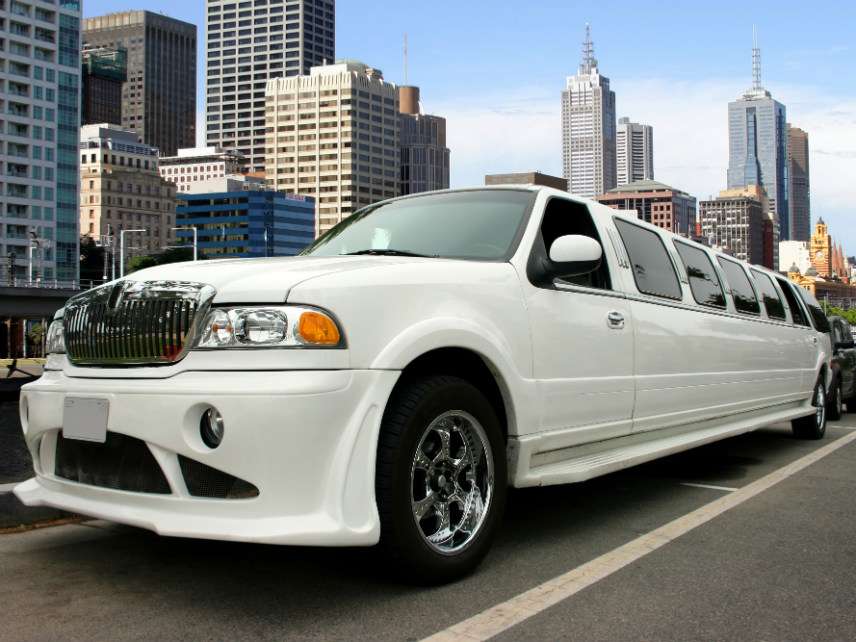The Case for New Limo Regulations Is a Stretch
The limo company and driver in the deadly New York crash were already flouting the state's strict rules.

This weekend's tragic limousine crash in upstate New York has left many dead, many more looking for answers, and a few raising the possibility of new regulations.
Twenty people were killed this past Saturday after a modified stretch SUV operated by Prestige Limousine plowed through a T-Intersection known to locals to be hazardous and then crashed into the parking lot of a nearby business. All 18 people in the limo were killed, including the driver, as were two pedestrians.
In response, New York State Assemblyman David F. Gantt (D–Rochester)—head of the Assembly's Transportation Committee—has said that the legislature will start hearings on limousine regulations come January. "Regulations and safety provisions found to be limited," reads the headline in the local Binghamton Press & Sun-Bulletin. "These accidents happen again and again, yet little changes. It's part and parcel of the lax regulations surrounding all sorts of aspects of American life," Washington Post contributor Helaine Olen declares, linking to storied about limo crashes from 2013 and 1987.
Saturday's crash is the country's most deadly transportation-related accident in nearly a decade, so these calls for more regulations were predictable. They're also premature, given how little we know now about the precise cause of the crash—and given how flagrantly Prestige was violating the laws already on the books.
According to comments made Monday by Gov. Andrew Cuomo, the vehicle involved in the crash had failed a state safety inspection in September, which he said should have kept it off the road. The driver likewise did not have a Class B commercial driver's license, which is required for vehicles carrying more than 12 people.
Vehicles that carry more than 12 passengers are also required to be inspected biannually by the state, and federal law requires certification for any vehicles travelling over state or international borders. Limo drivers in New York state must also pass yearly physicals and background checks, and are subject to random drug and alcohol testing.
"We are one of the strictest states in the country when it comes to regulations for vehicles over nine passengers," said Kevin Barwell of the Limousine, Bus, and Taxi Operators of Upstate New York to Buffalo radio station WBEN.
Whether the driver in Saturday's crash underwent any required physicals is unclear, given that he lacked the appropriate license. This highlights the trouble of trying to pile more regulations on companies that aren't following the current ones, a problem Cuomo himself has pointed out.
"So sometimes you say, 'Well, maybe we should inspect more frequently, maybe this, maybe this,'" said the governor on Monday. "Sometimes people just don't follow the law. And that may very well be what happened here."
Several commentators say the very design of stretch limos—which usually undergo post-manufacturer modifications to make them longer—increase their safety hazards. The new vehicles are heavier (which can make braking harder), and they often have side air bags or rollover pillars removed.
"From a basic physics standpoint, driving a stretch limousine is never as safe as a car," writes Zac Palmer at Autoblog.
That's a fair point. Yet despite the added safety risks of stretch limos, accidents involving the vehicles are quite rare. The National Highway Traffic Safety Administration reports only 12 such crashes from 2012 to 2016, compared to 157,000 total crashes in the same period of time. Figures from Luxury Coach & Transportation—an industry publication—show roughly 8,000 limousine operators in the United States in 2015. Some 4,000 stretch limousines and buses were sold in the U.S. that year.
Adding new regulationsto try to stop exceedingly rare accidents is rarely effective and can often be counter-productive. There's no better example of this than regulators' response to the last transportation disaster to be deadlier than Saturday's limo crash—the fate of Colgan Flight 3407 near Buffalo, New York, in 2009.
That airplane crash—the last for a commercial airliner in the United States—killed 50 people, thanks to a mix of bad weather and pilot error. In response, Congress raised the number of flight-hours required to obtain a commercial pilot's license to 1,500 hours (up from 250), despite the facts that both Colgan pilots had over 1,500 hours of experience, that no commercial airline pilot involved in a fatal crash since the early 1980s had fewer than 1,500 hours, and safety regulators were neutral as to the benefits of raising the required number of hours.
The result has been a growing pilot shortage across America's regional airlines, with many smaller cities losing air service entirely.
Obviously, stretch limousines are not nearly as essential to America's transportation needs as air travel. Any overly burdensome regulation will inhibit a luxury, not a crucial means of getting around the country. But in the absence of a compelling safety reason for new rules—or some guarantee that those new regulations will be followed more closely than the existing ones—politicians should resist the urge to layer more red tape on the limo industry.
Rent Free is a weekly newsletter from Christian Britschgi on urbanism and the fight for less regulation, more housing, more property rights, and more freedom in America's cities.

Show Comments (20)